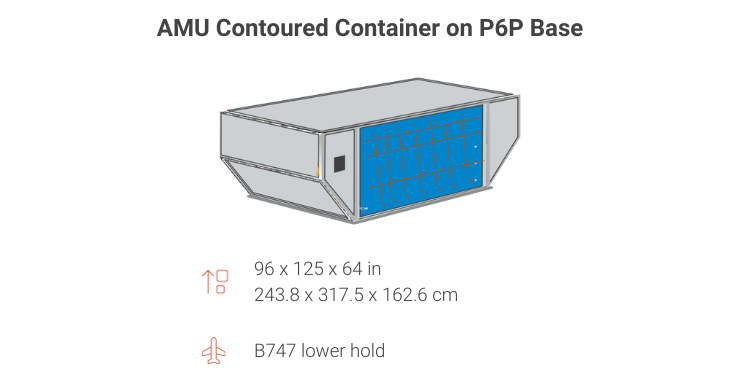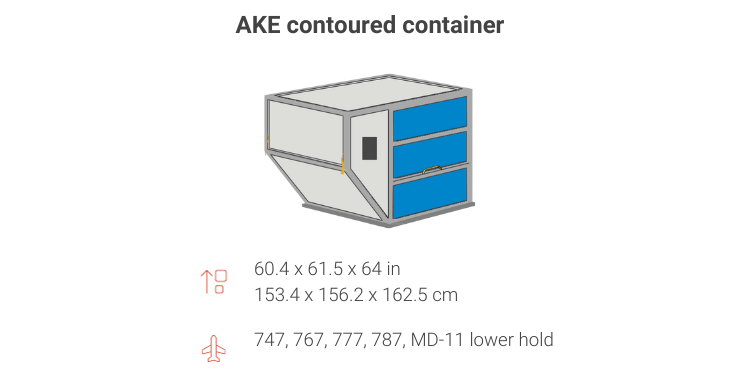Your Guide to Unit Load Devices (ULD)
- Marketing / CargoPoint
- Oct 13, 2023
- 4 min read
Updated: Oct 16, 2023
A Unit Load Device (ULD) is a standardized container or pallet used in the aviation industry to efficiently and safely transport cargo on aircraft. ULDs are designed to fit into the cargo holds of various types of aircraft, such as passenger planes and freighter aircraft, to optimize the use of available space and ensure safe transportation of goods. ULDs are versatile and can be used to transport a wide range of goods, including general cargo, perishable goods, live animals, pharmaceuticals, hazardous materials, and more. According to IATA, every 24 hours, more than 140,000 tonnes of cargo worth 17.8 billion USD are transported.

Types of Unit Load Devices
ULDs come in different sizes and configurations. Different types of ULDs are designed to accommodate the specific requirements of various cargo types. For example, temperature-controlled containers are used for perishable goods or specialized live animal containers are used to transport live animals. They are made from materials such as aluminum to provide a balance between strength and weight. Here are some common ULD types:
1. Pallets: Standard pallets are flat platforms made of lightweight materials that come in various dimensions and can be carried on different types of aircraft, on the main deck or lower deck. They facilitate the loading and unloading of cargo, ensuring seamless operations at airports. Air pallets are not only instrumental in optimizing space utilization within aircraft but also in maintaining cargo integrity during transit. They play a pivotal role in the global supply chain, enabling the safe and organized transportation of goods by air, and contributing to the efficiency and reliability of the aviation industry. Below are the main types of pallets:
2. Сontainers: Air containers are designed to securely house various types of cargo, offering protection from external elements and ensuring efficient handling and storage within aircraft holds. They come in standardized sizes, allowing for compatibility with a wide range of aircraft. They come in standardized sizes, which enhances compatibility with various aircraft, thereby optimizing cargo placement and maximizing space utilization within an aircraft's cargo hold. This standardization is a boon for both airlines and logistics companies, as it simplifies cargo handling and ensures a consistent and efficient workflow at airports around the world.
ULD Use Cases
Unit Load Devices (ULDs) are used in the aviation industry to streamline the handling and transportation of cargo, mail, and baggage on aircraft. It is easier to handle and transport cargo that is unitized, rather than dealing with individual packages or wooden pallets.
Here's how ULDs are typically used:
Cargo Build-Up: Cargo is loaded onto the pallets according to the load plan. Heavier and bulkier items are typically placed at the bottom of the pallet, while lighter and more delicate cargo is positioned on top. This arrangement helps maintain proper balance and stability during flight. Cargo is secured to the pallet using straps, nets, or other restraints to prevent movement during transit.
Loading Cargo: Ground handling staff use specialized equipment such as forklifts and main deck loaders to load ULDs into the cargo compartment of the aircraft. ULDs are positioned and secured according to the aircraft's loading plan, which takes into account the aircraft contour, weight distribution, and balance of the cargo.
Securing Cargo: Once the ULDs are loaded into the aircraft's cargo holds, they are secured using straps, nets, or other restraints to prevent movement during flight. This ensures that the cargo remains in place, minimizing the risk of damage to both the cargo and the aircraft. Aircraft ULDs directly interface with the aircraft Cargo Loading System (CLS) and become part of the aircraft’s structure during flight.
Aircraft Compatibility: ULDs are designed to fit specific aircraft types. Different aircraft have varying cargo compartments, so you need to choose ULDs based on the aircraft's compatibility to maximize space utilization.
Unloading Cargo: Upon arrival at the destination airport, ground handling staff use equipment cargo high loaders to carefully unload ULDs from the aircraft. This process is usually done with consideration for the order in which the cargo needs to be unloaded for efficient ground operations.
Transshipment: In cases where an aircraft's final destination is not the cargo's final destination, ULDs may be transshipped, meaning they are transferred from one aircraft to another for onward transportation. In air cargo, this is frequently used in hub-and-spoke airline networks to maximize efficiency and reduce aircraft turnaround time.
Return Journey: Empty ULDs might be sent back to their point of origin to be refilled with cargo for their next journey, completing the cycle. Often, ULDs are filled with cargo for their return journey, depending on the availability of cargo.
Tracking and Management: ULDs may be equipped with tracking devices that incorporate advanced technologies such as GPS (Global Position System), RFID (Radio-Frequency Identification), or IoT (Internet of Things) sensors to provide real-time visibility. Efficient tracking of ULDs contributes to the safe and efficient transport of goods, cost reduction, and improved customer satisfaction in the aviation and shipping industries.
Freight Cost Calculation: Calculation of airfreight costs based on the pivot weight of the ULD which is a practical and efficient approach in the air cargo industry. It promotes standardized handling, simplifies billing, encourages efficient use of cargo space, and ensures fairness in pricing.
Conclusion
Unit Load Devices (ULDs) play a crucial role in the efficient and safe transportation of cargo by air. From its inception as simple wooden pallets to the advanced, technology-driven containers of today, ULDs have evolved significantly since the 1950s, revolutionizing the airfreight industry. Their design, ease of handling, and compatibility with various aircraft have made them indispensable tools for airlines and freight companies worldwide. As the demand for air cargo continues to grow, ULDs will remain at the forefront of ensuring seamless and secure air cargo transportation, reinforcing their status as unsung heroes of aviation logistics.
CargoPoint is committed to delivering top-tier air freight services, and a cornerstone of our commitment is ensuring the safe and efficient transportation of your cargo using the most suitable Unit Load Device (ULD). With our meticulous attention to detail and industry expertise, we carefully select the ideal ULD for your specific cargo, considering factors such as size, weight, and fragility. By doing so, we guarantee that your shipment is not only secure but also optimally packaged, maximizing space utilization and minimizing costs. Learn more about our services here or contact our team today to consult free of charge.

























































